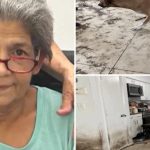In a recent State of the State address, New York Governor Kathy Hochul announced a sweeping change to the state’s higher education admission policies, igniting a wave of controversy. The proposal entails granting automatic admission to the State University of New York (SUNY) and the City University of New York (CUNY) to every high school student graduating in the top 10% of their class. While aiming for increased accessibility, the plan has faced significant pushback, particularly for its potential adverse impact on meritocracy.
The Shift in Admission Dynamics
Traditionally, admission to esteemed institutions like SUNY Binghamton has been competitive, considering factors such as academic performance and standardized test scores. However, Governor Hochul’s plan seeks to alter this landscape by guaranteeing admission to the top decile of graduating high school students.
Meritocracy vs. “Source Diversity”
The proposal has sparked a heated debate between proponents of meritocracy and those advocating for “source diversity.” Critics argue that such a system fails to account for the varying rigor and standards across different high schools. The example of a student from the renowned Bronx High School of Science, a bastion of academic excellence, has become a focal point of the discussion.
Flaws in the 10% Scheme
Detractors of the plan highlight several flaws. Firstly, they argue that it discriminates against high-achieving students from more demanding educational institutions. Secondly, the plan is criticized for providing a superficial solution to a more profound issue – the state of education in underperforming schools.

Read more:
- No Trump Support: GOP Candidate Mazi Pilip in NY Won’t Back Trump if Criminally Charged
- Governor Hochul Signs Bill Redefining Rape in New York
- California Gun Control Law Back in the Legal Spotlight
- Iran Bombing Urged by Hawks, Barbara Lee Stands Firm on Peace
Historical Context and Resonance with Past Biases
Drawing parallels with historical incidents of biased admission policies, particularly in the 1920s when Harvard implemented “geographic diversity” to limit the number of Jewish students, critics suggest a troubling pattern. The plan, they argue, may be perpetuating discriminatory practices, now subtly directed towards Asian Americans.
Dog-Whistle Terms and Controversial Motivations
Critics of the plan are quick to point out what they consider as “dog-whistle terms” such as “equity,” “underrepresented,” and “marginalized.” These terms, they contend, echo arguments used in the defense of controversial admission practices in institutions like Harvard and specialized high schools in New York City.
Real Problem vs. Distraction
While Governor Hochul’s plan aims to address issues of diversity and equity, opponents argue that it distracts from the root cause of educational disparities. Highlighting a failing school like PS 197, critics argue that the real issue lies in the educational system’s shortcomings, affecting students of all backgrounds, including the 17% who are Asian American.
Unintended Consequences
The 10% scheme, according to its critics, falls short in multiple ways. It is seen as discriminatory against Asian Americans, offering a superficial solution to deeper educational problems, and diverting resources from universities to address issues that should have been tackled at earlier stages of education.
Questioning the Texas Model
In response to those holding up Texas’ 10% admission scheme as a model, critics argue that it does not apply universally, with exceptions for top-ranking campuses. They also question the validity of studies claiming the scheme’s success, pointing to flawed metrics and inflated college grades.
A Call for Retraction
Opponents of Governor Hochul’s plan are urging a reconsideration of the 10% scheme, emphasizing its potential negative consequences. They call for a more nuanced approach that addresses educational disparities at their roots and ensures a fair and meritocratic system for all students.
Conclusion: The Battle Over Admission Policies
As New York grapples with the proposed changes to higher education admission, the debate intensifies. The clash between the principles of meritocracy and the pursuit of diversity underscores the complexity of crafting admission policies that are both inclusive and fair. As stakeholders on both sides present their arguments, the future of Governor Hochul’s 10% scheme remains uncertain, hanging in the balance of public opinion and potential legislative scrutiny.
























+ There are no comments
Add yours